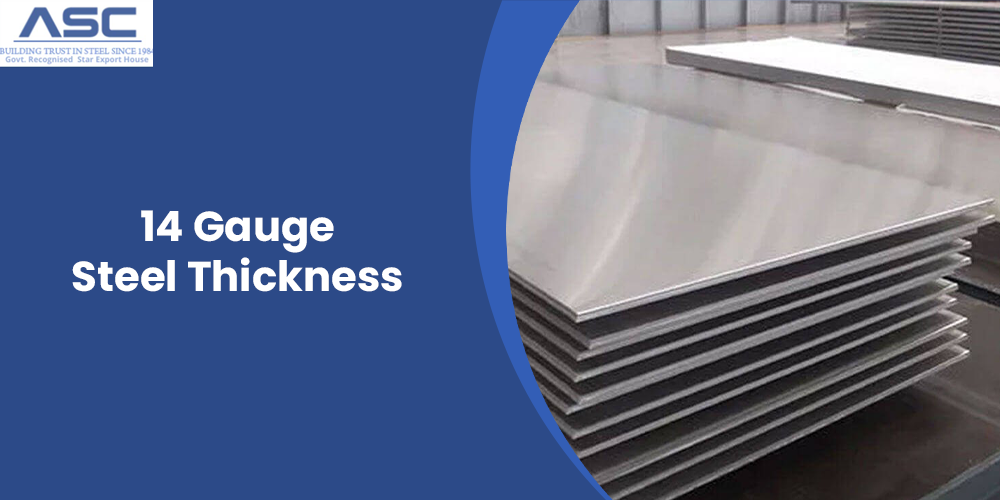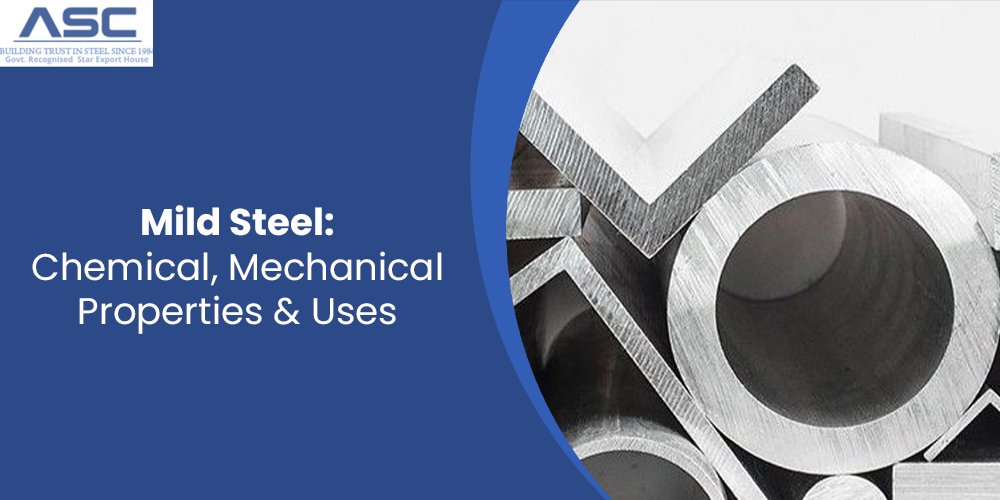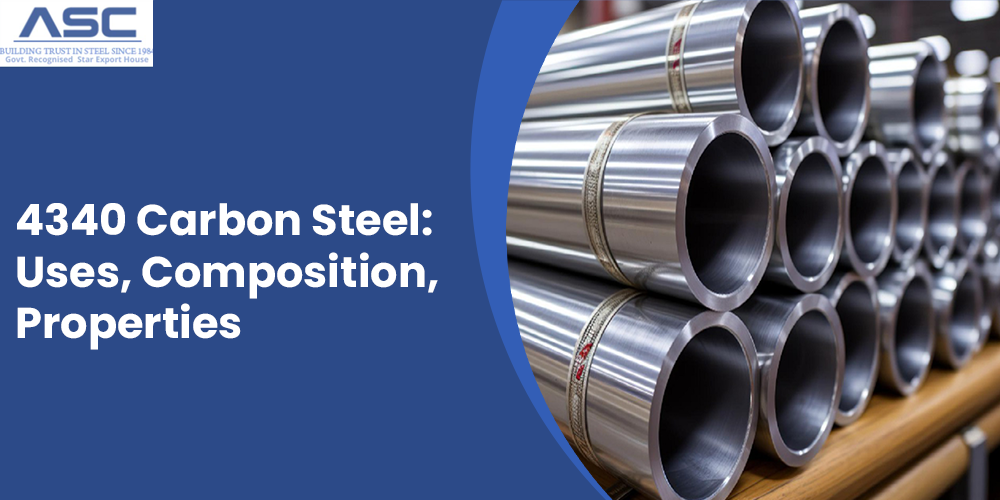Density of Steel: Mild and Carbon Steel Density (lb/in³ & kg/m³)
by AMC
Posted on August 03, 2024 at 12:40 PM

What is the Density of Steel?
Steel has a density of approximately 7.85 g/cm³ or 7850 kg/m³, which is about 490 pounds per cubic foot. This high density makes steel a strong and reliable material, ideal for demanding construction projects. Suppliers like Buy A Beam offer high-quality steel beams and columns with impressive load capacities.
When purchasing steel online, it’s important to know key details such as dimensions, weight, and density. Understanding these aspects helps ensure you make a wise investment in steel that will provide exceptional performance and versatility.
What is Density?
Density is a measure of how much matter is packed into a given space. Materials vary in density, with some being more compact than others. For instance, steel is much denser than many other materials because its molecules are tightly packed together.
In scientific terms, density is the mass of a material divided by its volume. The formula for density is:
Density (p)=Mass (m)Volume (V)\text{Density (p)} = \frac{\text{Mass (m)}}{\text{Volume (V)}}Density (p)=Volume (V)Mass (m)
This means density is calculated by dividing the mass of the material by how much space it occupies.
Density is considered an intensive property, which means it remains constant regardless of the amount of material. So, whether you have a small piece or a large piece of steel, its density will be the same.
What is Steel’s Density?
Steel has a density of 7.85 g/cm³, making it much denser than many other metals.
For example, steel is twice as dense as titanium and three times as dense as aluminum. This high density contributes to steel's strength and durability, making it a popular choice for construction materials like beams and columns.
Steel’s density also plays a significant role in its versatility. It's used in a range of applications, including railings, gates, and frames, thanks to its strength and affordability. Steel is not only strong but also environmentally friendly and resistant, which adds to its appeal.
Understanding Steel’s Density
The density of steel is closely related to the formation of bonds within its alloy. For example, mild steel, a type of carbon steel, has a density of around 7.8 g/cm³. This density is influenced by the amount of carbon present in the steel. In carbon steel alloys, the carbon content typically ranges from 0.16% to 0.29%.
Carbon levels affect the density and properties of steel. For instance:
- Mild Steel: With a good amount of carbon, mild steel has a density of about 7.8 g/cm³.
- Carbon Content: Higher carbon content generally results in increased density, leading to greater strength and hardness. However, it can also reduce ductility.
Density plays a crucial role in determining the steel's characteristics, such as:
- Tensile Strength: Higher density usually means greater resistance to deformation.
- Hardness: Increased density can lead to harder steel, though it might be less ductile.
- Appearance and Properties: Mild steel has a dark appearance due to high carbon content, and its hardness varies with carbon levels. It is also more prone to rust and less suitable for extreme temperatures.
For engineers, understanding the density of steel is essential when selecting materials for various applications. Different steels and alloys have different densities, which influence their suitability for industries such as oil & gas, petrochemicals, and pharmaceuticals.
We have categorized popular steel grades into 10 groups for ease of reference:
- Carbon Steel
- Mild Steel
- Alloy Steel (Low & Medium)
- Stainless Steel
- Duplex & Super Duplex Steel
- Nickel Alloys
- Titanium Alloys
- Copper & Copper Nickel
- Brass
- Aluminum
Understanding these categories helps in selecting the right steel for specific industrial needs.
Density of Carbon Steel Pipes in kg/m3 and lb/in3
Density of Carbon Steel
| ASTM | Density in kg/m3 | Density in lb/in3 |
|---|---|---|
| ASTM A53 Grade B | 7,85 | 0.283 lb/in3 |
| ASTM A106 Grade B | 7,86 | 0.284 lb/in3 |
Density of Mild Steel
| MS Grades | Density in kg/m3 | Density in lb/in3 |
|---|---|---|
| ASTM A572 | 7,966 | 0.282 |
| IS 1239 IS 3589 |
7,860 | 0.283 |
| IS 2062 | 7,850 | 0.283 |
| ASTM A36 | 7,800 | 0.281 |
Density of Alloy Steel (Low/ Medium)
| Grades | Density in kg/m3 | Density in lb/in3 |
|---|---|---|
| Low Alloy Steel | 7,500 to 8,080 | 0.271 to 0.292 |
| Medium Alloy Steel | 6,600 to 7,860 | 0.238 to 0.284 |
| P9 Pipe (9 Cr-1 Mo Alloy Steel) | 7,850 | 0.283 |
| P11 Pipe (1-1/4 Cr-1/2 Mo Alloy Steel) | 7,850 | 0.283 |
Density of Stainless Steel
| SS | Density in kg/m3 | Density in lb/in3 |
|---|---|---|
| 201 202 301 302 303 304 304L 304LN 305 |
7,930 kg/m3 | 0.286 lb/in³ |
| 309S 310S 316 316L 316Ti 316LN 317 317L 347 |
7,980 kg/m3 | 0.288 lb/in³ |
| SS 904L | 7,980 kg/m3 | 0.288 lb/in³ |
| 321 | 8,027 kg/m3 | 0.289 lb/in³ |
| 403 410 410S 416 431 |
7,750 kg/m3 | 0.280 lb/in³ |
| 440A | 7,740 kg/m3 | 0.280 lb/in³ |
| 440C | 7,620 kg/m3 | 0.275 lb/in³ |
| 420 | 7,730 kg/m3 | 0.280 lb/in³ |
| 439 430 430F |
7,700 kg/m3 | 0.278 lb/in³ |
| 434 | 7,740 kg/m3 | 0.280 lb/in³ |
| 444 | 7,750 kg/m3 | 0.280 lb/in³ |
| 405 | 7,720 kg/m3 | 0.279 lb/in³ |
| 17-4PH (martensitic) | 7,750 kg/m3 | 0.279 lb/in³ |
| 17-7 PH (semi-austenitic) | 7,810 kg/m3 | 0.282 lb/in³ |
Density of Duplex & Super Duplex Steel
| Grades | Density in kg/m3 | Density in lb/in3 |
|---|---|---|
| DSS 2205 (UNS S31803) | 7,800 | 0.282 |
| SDSS 2507 (UNS S32750) | 7,850 | 0.284 |
| A286 Grade 660 (UNS S66286) | 7,920 | 0.286 |
| 254 SMO (UNS S31254) | 8,100 | 0.292 |
Density of Nickel Alloys
| Grades | Density in kg/m3 | Density in lb/in3 |
|---|---|---|
| Ni 200/ 201 | 8890 | 0.321 |
| Monel 400 (UNS N04400) | 8860 | 0.320 |
| Monel K500 (UNS N05500) | 8300 | 0.299 |
| Inconel 600 (UNS N06600) | 8410 | 0.303 |
| Inconel 601 (UNS N06601) | 8050 | 0.290 |
| Inconel 625 (UNS N06625) | 8440 | 0.304 |
| Inconel 718 (UNS N07718) | 8220 | 0.296 |
| Alloy 20 (N08020) | 8050 | 0.290 |
| Incoloy 800/H/HT (UNS N08800, N08810, and N08811) | 8030 | 0.290 |
| Incoloy 825 (UNS N08825) | 8140 | 0.294 |
| Hastelloy C276 (UNS N10276) | 8870 | 0.320 |
| Hastelloy C22 (UNS N06022) | 8690 | 0.313 |
Titanium Alloys Density
| Grades | Density in kg/m3 | Density in lb/in3 |
|---|---|---|
| Grade 2 Titanium (UNS R50400) | 4,510 | 0.162 |
| Grade 9 Titanium (UNS R56320) | 4,480 | 0.161 |
Copper & Copper Nickel Density
| Grades | Density in kg/m3 | Density in lb/in3 |
|---|---|---|
| Free-Cutting Brass (UNS C36000) | 8,490 | 0.307 |
| Cartridge Brass (UNS C26000) | 8,530 | 0.308 |
Density of Brass
| Grades | Density in kg/m3 | Density in lb/in3 |
|---|---|---|
| Free-Cutting Brass (UNS C36000) | 8,490 | 0.307 |
| Cartridge Brass (UNS C26000) | 8,530 | 0.308 |
Density of Aluminium
| Grades | Density in kg/m3 | Density in lb/in3 |
|---|---|---|
| 2040 | 2800 | 0.101 |
| 3560 | 2680 | 0.096 |
| 4430 | 2700 | 0.097 |
| 1060 | 2705 | 0.097 |
| 1100 | 2710 | 0.097 |
| 2014 | 2800 | 0.101 |
| 2024 | 2780 | 0.100 |
| 3003 | 2730 | 0.098 |
| 3004 | 2720 | 0.098 |
| 5052 | 2680 | 0.096 |
| 5083 | 2660 | 0.096 |
| 5086 | 2660 | 0.096 |
| 5154 | 2660 | 0.096 |
| 5254 | 2660 | 0.096 |
| 5454 | 2690 | 0.097 |
| 5456 | 2660 | 0.096 |
| 5652 | 2670 | 0.096 |
| 6061 | 2700 | 0.097 |
| 6063 | 2700 | 0.097 |
How to Calculate Density
To calculate the density of steel, use the following straightforward formula:
Density (D)=Mass (M)Volume (V)\text{Density (D)} = \frac{\text{Mass (M)}}{\text{Volume (V)}}Density (D)=Volume (V)Mass (M)
Where:
- Density (D) is measured in kilograms per cubic meter (kg/m³) in metric units.
- Mass (M) is measured in kilograms (kg).
- Volume (V) is measured in cubic meters (m³).
D = m/v
Converting Units
- Convert g/cm³ to kg/m³:
If you have the density in grams per cubic centimeter (g/cm³) and need to convert it to kilograms per cubic meter (kg/m³), use this conversion factor: - 1 g/cm³ = 1000 kg/m³
- Simply multiply the density value by 1000 to get the value in kg/m³.
- Convert lbs/in³ to kg/m³:
In the US, density might be measured in pounds per cubic inch (lbs/in³). To convert this to kilograms per cubic meter (kg/m³), use the conversion factor: - 1 lb/in³ = 27,679.9 kg/m³
- Multiply the density value in lbs/in³ by 27,679.9 to get the equivalent value in kg/m³.
Steel Density lb/in3
| Steel Name | Density (g/cm3) | Density (lb/in3) |
|---|---|---|
| AISI 1020 | 7.87 g/cm3 | 0.284 lb/in3 |
| AISI 1045 | 7.85 g/cm3 | 0.283 lb/in3 |
| AISI 1018 | 7.87 g/cm3 | 0.284 lb/in3 |
| ASTM A36 | 7.85 g/cm3 | 0.283 lb/in3 |
| C45 | 7.85 g/cm3 | 0.283 lb/in3 |
| S45C | 7.85 g/cm3 | 0.283 lb/in3 |
| AISI 1045 | 7.85 g/cm3 | 0.283 lb/in3 |
| AISI 1010 | 7.87 g/cm3 | 0.284 lb/in3 |
Density of Carbon Stee
| Type of Steel | Density (g/cm³) | Density (lb/in³) | High Carbon Steel |
| Plain Carbon Steel | 7.75 to 8.05 | 0.280 to 0.291 | 7.75 to 8.05 |
| Low Carbon Steel (Mild Steel) | 7.85 | 0.284 | 0.280 to 0.291 |
Note: If you have any suggestions or require further adjustments, please click here to write to us, and we will incorporate the relevant changes within 3 days of receiving your email.

14 Gauge Steel Thickness: SS & Aluminum Sheet Measurements (mm & inches)
Gauge is a widely used system for measuring the thickness of metal sheets, essential in manufacturing, fabrication, and construction. The gauge number corresponds.

